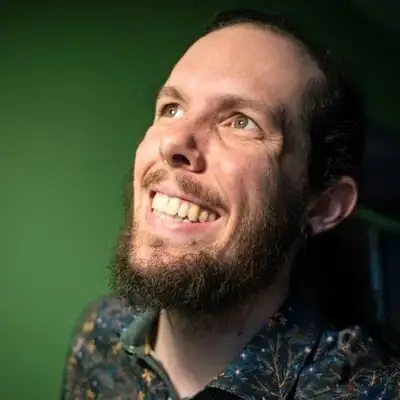 Episode 4
Episode 4
· 04:24
I recently read a book that talked
about vision and mission, and I
realized that we really need to put
something out into the world to explain
what our vision and mission are.
What our mission and vision though.
I think vision is the world
that we want to create.
The one that we want to see
at the end of this journey.
Mission is how we get there.
The path we choose and construct
to make our vision a reality.
Let's talk about vision first.
We see a world right now, where
there are loads of people who could
build amazing tech platforms that
could help millions of other people.
But they don't build those platforms
either because they don't have
access to the technology or the
education or the current ecosystem
just doesn't support them.
What we envision with the Chewy
Stack is a world where nobody hits
those barriers to access where people
can build the platforms they've
imagined to serve their communities.
Okay, now let's talk about mission.
This is going to be a lot longer.
At first.
We thought we should start a bootcamp or
an accelerator to help people learn how
to build digital products and launch them.
But we realized that we were particularly
focused on helping people build.
So we decided we needed to come up
with a curriculum that came from
our experience, building web and
mobile apps for small organizations.
When I say we, I mean Éphémère
Creative, which is the small digital
product studio behind all of this.
The thing is if we were going
to build a curriculum based off
of our process and experience.
Well, we use a process and a stack
that's really efficient to build products
quickly in a variety of contexts,
but it's pretty complicated to set up
initially and can be hard to manage.
So we decided we should build some
tooling to automate a bunch of the
configuration and management for this
stack, which we want to put out into
the world to help achieve our vision.
Essentially that's what
the Chewy Stack is.
It's a collection of open source
tools that make up a really nice way
to build complex web and mobile apps
that we've glued together with some
custom tooling that make them a lot
easier to manage and deploy, which
should make the whole process way
more accessible to way more people.
In the end, the best way
to define the chewy stack.
Is probably to say that it's a framework
kind of, it's a way to organize
your code for front end and back.
End features built on top
of a few different services.
But unlike most frameworks,
the infrastructure is actually
defined in the framework.
So the idea is that if you're using the
Chewy Stack, you can use AWS without
being an AWS expert, or you can deploy
to a DigitalOcean droplet without
having to learn how to do that properly.
So many tools and frameworks promise
to get out of your way and let you
write application code, but there's
so much variability in how to manage
infrastructure and environments,
even with platforms as a service like
Heroku, that if you're a small or
working solo you inevitably have to
deal with something going wrong at
some point or another, as you try to
move from development to production
and it just doesn't work quite right.
That's the promise of the Chewy Stack:
you can build complex applications
and move from dev to staging, to prod
across infrastructures and only ever
have to think about application code.
It's a set of open source services that
make it easy to build web and mobile
apps quickly that are connected and
managed by some more code to make things
nice and easy so that more people can
build better products more easily.

Listen to Codename Chewy by EC using one of many popular podcasting apps or directories.